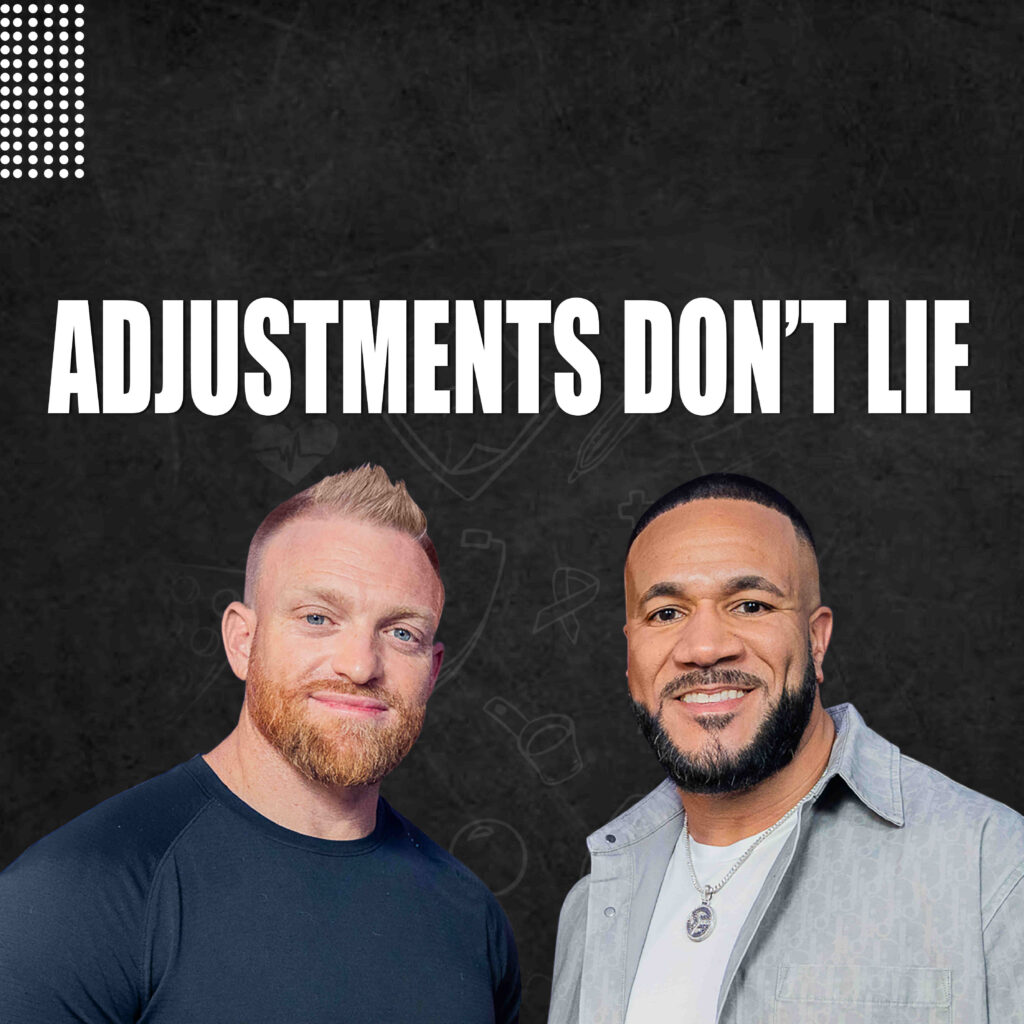Most people think of chiropractic care as a quick fix for back pain: a few cracks, a pop, and you’re out the door. But what if alignment wasn’t just about your spine, but your entire state of being? What if one adjustment could change the way you breathe, move, and live?
That’s exactly the kind of thinking that caught the attention of Sam Tejada, CEO and Founder of Liquivida®, who recently invited Dr. Zev Mellman, chiropractor to athletes, CEOs, and world changers, to join him on “A Healthy Point of View” podcast. What followed was a powerful reminder that the body isn’t just a machine to maintain; it’s a story of movement, energy, and purpose waiting to be told.
From Shaq to the Streets: The Truth About Chiropractic & Real Healing | Dr. Zev Mellman | Ep. 96

A Fall That Changed Everything
When Dr. Mellman was a teenager, he fell out of a tree and landed hard on his back. The pain passed quickly, but months later, his lungs began to fail him. He developed asthma and spent the next year cycling through inhalers, antibiotics, and endless medical visits. His body kept getting weaker, his skin broke out, and his confidence started to fade.
Then came what he calls “Plan C” chiropractic care. His mother took him to a chiropractor who examined his spine and found a curvature in his lower back. “She adjusted me for the first time, and I took the biggest breath of my life,” he recalls. Within three months, he was completely off his inhalers. “It wasn’t just that I could breathe again,” he says. “I felt alive. I felt hopeful. I felt like myself.”
That single experience ignited his purpose. He decided then that he would spend his life helping others unlock that same freedom, the ability to breathe, move, and live without limits.
Healing Isn’t Chemical — It’s Mechanical
Dr. Mellman explains chiropractic in a way that reframes everything people think they know about health. “Medicine changes chemistry,” he says. “Chiropractic changes mechanics. There’s no drug in the world that can move a bone.”
He describes the human body as a feedback system, one that constantly sends and receives messages between the spine and the brain. When the joints in the spine become restricted, they send signals of distress to the brain, creating a constant hum of stress that tightens muscles, shortens breath, and disrupts overall function. “Most people are walking around unaware that something’s wrong,” he says. “No pain doesn’t mean no problem.”
An adjustment, he explains, restores movement to those locked joints, quieting the body’s internal noise and allowing the nervous system to reset. “The moment you free the spine, you free the brain,” he says. “That’s why people leave feeling lighter, calmer, and more present. The body’s chemistry follows its structure.”
The Missing Link in Modern Medicine
For Dr. Mellman, the biggest difference between traditional medicine and chiropractic is touch. “Most medical doctors today don’t put their hands on patients anymore,” he says. “They diagnose from lab results. Chiropractors diagnose by feel, by connecting with the body.”
That hands-on philosophy is what connects chiropractic to ancient healing practices. From the Greeks to the martial artists of Asia, manual medicine has existed for centuries. “We didn’t invent movement,” Dr. Mellman says. “We just refined it. Chiropractic is the modern language of something humans have always known: movement is medicine.”
He’s the first to acknowledge that medicine has its place. “It saved my life more than once,” he says. “But no pill will ever restore motion. Healing doesn’t always come from the outside in; sometimes it comes from the inside out.”
The Truth About “Forever Care”
Critics often claim chiropractic care is addictive, that once you start, you can’t stop. Dr. Mellman laughs at the idea. “That’s like saying once you start working out, you’re stuck exercising for life,” he says. “Your body just remembers what normal feels like. Once you know that feeling, you don’t want to lose it.”
He compares regular adjustments to brushing your teeth or eating clean. “You don’t stop brushing because your teeth feel fine,” he says. “You do it because you understand what happens when you don’t.” Consistency, he adds, isn’t dependency; it’s discipline. “You can’t outsource self-care. You have to keep showing up for your body.”
He also admits the industry has its bad actors, people chasing profit over purpose. “In every field, there are those who cut corners. But the real ones? The ones who live this, they’re not selling adjustments. They’re restoring your potential.”
Healing the High-Performers
Despite his humility, Dr. Mellman’s clientele speaks volumes. From NBA legend Shaquille O’Neal to music icon DJ Khaled, some of the world’s most recognizable figures trust him with their health. But what’s striking isn’t their fame, it’s their humanity.
He recalls Shaquille O’Neal as “a giant with a heart even bigger than his frame.” Between sessions, Shaq would play Uno and checkers with kids in the clinic, making time for every fan. “He makes you feel like you’re the only person in the room,” Dr. Mellman says. “That’s the energy I try to bring to every patient.”
DJ Khaled, too, left a mark not just for his success but for his generosity. During a house call, he surprised Dr. Mellman’s young son with a thousand-dollar gift, simply as a gesture of gratitude. “That’s Khaled,” he says. “Pure heart, pure presence.”
These stories aren’t name drops; they’re reminders that even the most powerful people need alignment, both physically and mentally. “Whether you’re an athlete or an accountant, stress lives in the body,” he says. “My job is to help people let it go.”
The Real Definition of Wellness
For Dr. Mellman, wellness isn’t about supplements or six-packs. It’s about connection to self, to body, to purpose. “Everything starts with awareness,” he says. “You can take stem cells, do cold plunges, or get IV therapy. They all work. But none of them move your spine. None of them can replace movement.”
He sees chiropractic not as a treatment, but as a reminder that the body already knows how to heal. “We just have to stop getting in its way,” he says. “When your spine moves, your brain breathes. And when your brain breathes, your whole life opens up.”
Dr. Mellman’s approach to healing goes beyond the adjustment table. It’s a mindset, one rooted in curiosity, compassion, and connection. “Chiropractic didn’t just heal my asthma,” he says. “It woke me up. It showed me what true alignment feels like. And that’s what I want for everyone who walks through my door.”

